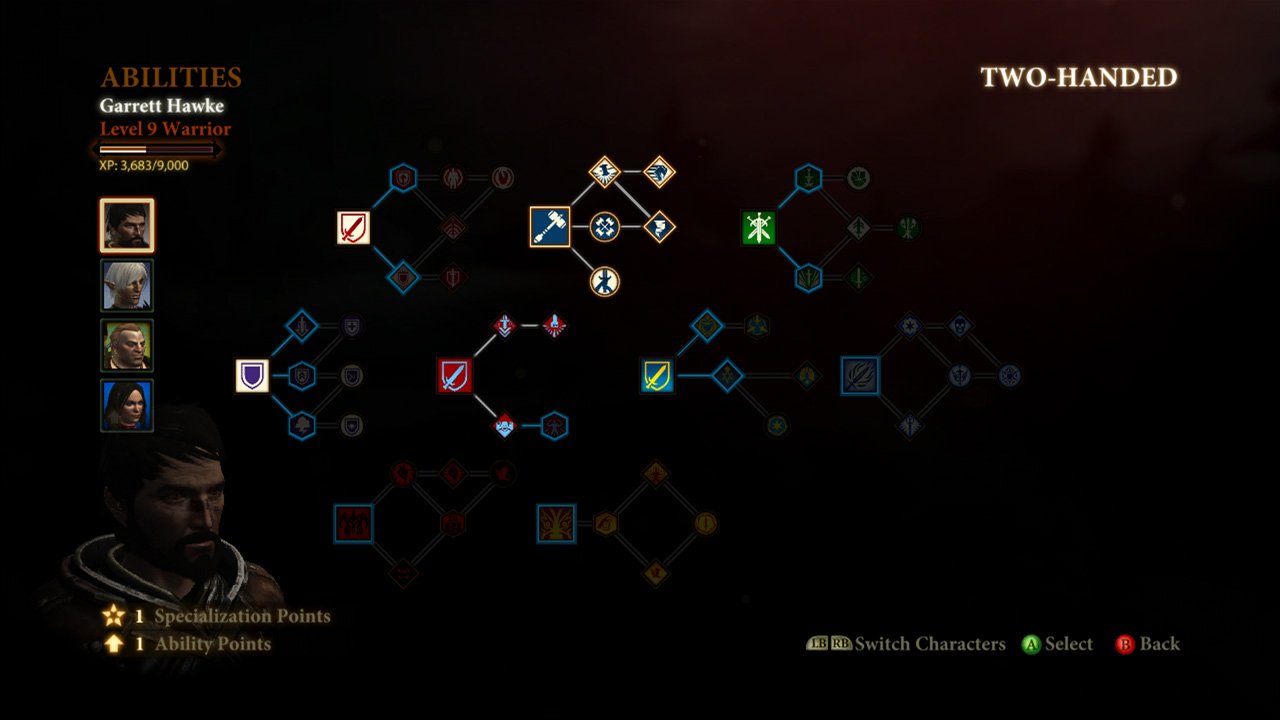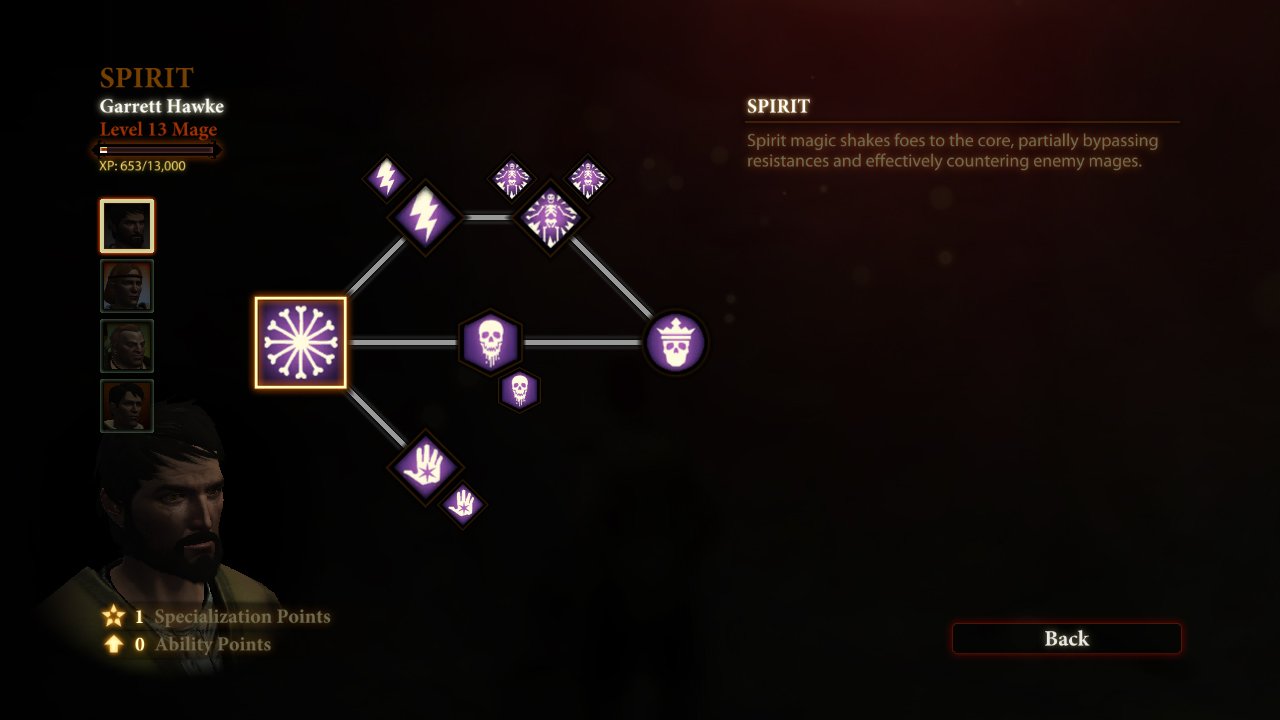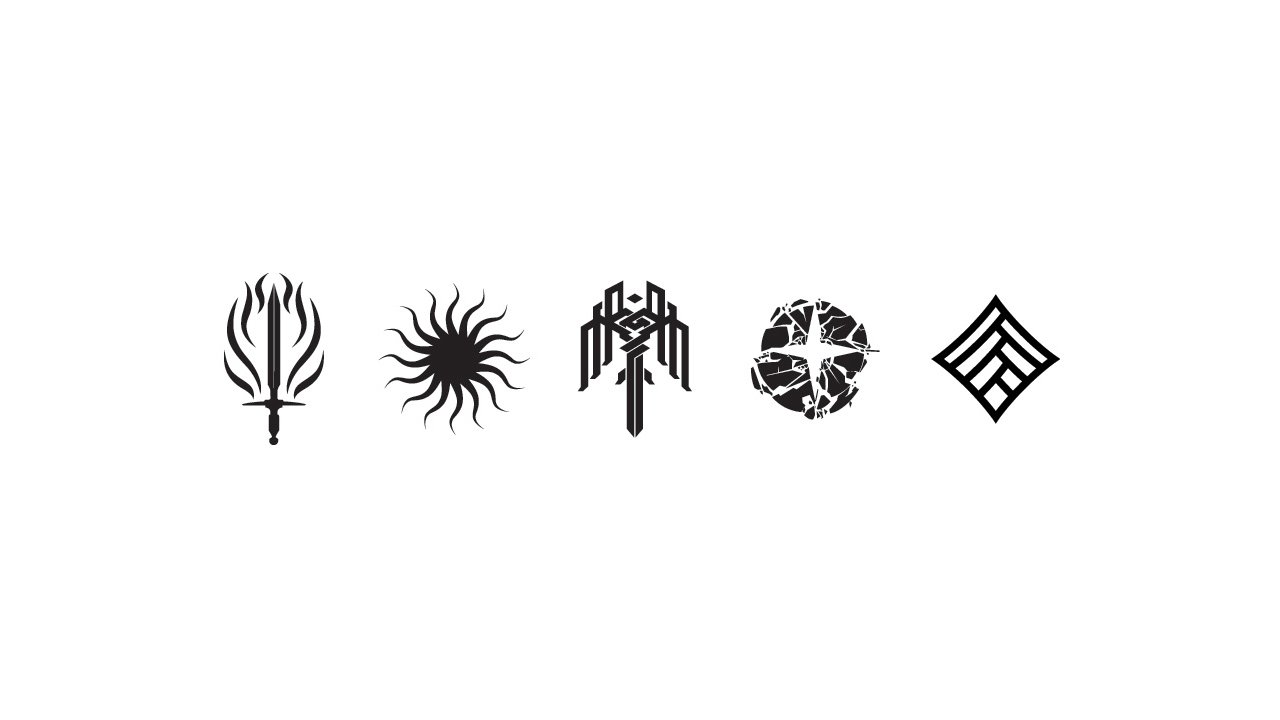Dragon Age II
Role: Lead UI/UX Artist
Studio: BioWare
Platform: PC / Xbox 360 / PS3
Release Year: 2011
Project Overview
As Lead UI/UX Artist on Dragon Age II, I was responsible for the design, direction, and implementation of the game’s entire interface across platforms. My work spanned everything from moment-to-moment HUD and interaction design to ability trees, inventory systems, and conversation UX. I led a small internal team of UI artists, collaborated with external partners on console interface support, and worked closely with engineering and narrative teams to ensure cohesion across all aspects of the player experience.
Create a responsive, cinematic UI that aligned with Dragon Age II’s faster pace and more personal storytelling.
Support a fully voiced protagonist with UI systems that reflected tone and personality.
Design and implement platform-scalable menus for PC and console, with controller-first interaction models.
Develop a visual identity that pushed away from Origins' grim realism toward a stylized, bold interface direction.
Showcase combat depth through branching skill trees and clear, expressive iconography.
Ability Trees – Visualizing Class Identity Through Constellation Design
Challenge:
Reinvent the RPG ability tree as an intuitive, engaging visual system that reflects each class’s fantasy and complexity.
Solution:
Designed branching ability trees for every class, laid out like constellations to emphasize unlock paths and interconnections.
Oversaw the creation and visual style of over 100 ability icons, ensuring they communicated function, archetype, and clarity at a glance.
Developed a node-based navigation system optimized for both mouse and controller use, with intuitive radial progression.
Led iteration sessions with gameplay designers to ensure balance between visual clarity, player choice, and UI real estate.
Systems UI – Inventory, Party, Journal, and Map
Challenge:
Unify complex RPG systems into a clean, accessible UI framework that works across platforms and input methods.
Solution:
Designed all core menus from the ground up: inventory, codex, journal, character sheet, party management, and map.
Established modular UI templates that scaled gracefully between PC resolution and console viewports.
Introduced a consistent icon language and interface flow, helping new players onboard faster without sacrificing depth.
Directed a small internal team of UI artists, handled asset planning and polish passes, and coordinated with external UI partners supporting console adaptations.
Dialogue Wheel – Tone as Character Identity
Challenge:
Adapt Mass Effect’s radial dialogue into a tone-based system that shaped a voiced protagonist’s emotional identity.
Solution:
Implemented a three-tone dialogue wheel: diplomatic, humorous, and aggressive, supported by expressive icons.
Integrated this system with the personality stacking mechanic, helping Hawke’s tone evolve over time.
Ensured all layout and iconography remained legible across localization and voiceover sync requirements.
Process & Tools
UI prototyping in Flash and Scaleform.
Worked alongside gameplay, cinematic, and narrative teams to balance presentation and interactivity.
Rapid iteration using internal testing and localization feedback to ensure visual consistency across platforms.
Outcome
The final UI system for Dragon Age II delivered a bold, cinematic experience that supported the game’s faster narrative pacing and tone-driven roleplay. The branching ability trees became a signature feature, with a constellation-inspired layout and iconography that helped visualize class identity while maintaining clarity and ease of use across input methods. My team successfully implemented a cohesive UI framework that scaled across PC and console, balancing stylized presentation with responsive interaction. The dialogue wheel and personality systems allowed players to define Hawke’s emotional tone without the constraints of a morality meter, setting a new precedent for how character-driven narratives could be expressed through UI. Despite a tight timeline and multiplatform demands, the work remained cohesive, polished, and true to the game’s evolving vision.
















